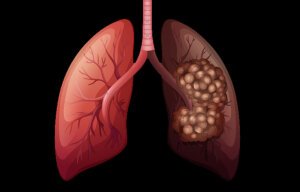
Overview Cancer refers to any one of a large number of diseases characterized by the development of abnormal cells that divide uncontrollably and have the ability to infiltrate and destroy normal body tissue. Cancer often has the ability to spread throughout your body.
Cancer is the second-leading cause of death in the world. But survival rates are improving for many types of cancer, thanks to improvements in cancer screening and cancer treatment.
Symptoms
Signs and symptoms caused by cancer will vary depending on what part of the body is affected.
Some general signs and symptoms associated with, but not specific to, cancer include:
• Fatigue
• Lump or area of thickening that can be felt under the skin
• Weight changes, including unintended loss or gain
• Skin changes, such as yellowing, darkening or redness of the skin, sores that won’t heal, or changes to existing moles
• Changes in bowel or bladder habits
• Persistent cough or trouble breathing
• Difficulty swallowing
• Hoarseness
• Persistent indigestion or discomfort after eating
• Persistent, unexplained muscle or joint pain
• Persistent, unexplained fevers or night sweats
• Unexplained bleeding or bruising
Symptoms

Signs and symptoms caused by cancer will vary depending on what part of the body is affected. Some general signs and symptoms associated with, but not specific to, cancer include:
• Fatigue
• Lump or area of thickening that can be felt under the skin
• Weight changes, including unintended loss or gain
• Skin changes, such as yellowing, darkening or redness of the skin, sores that won’t heal, or changes to existing moles
• Changes in bowel or bladder habits
• Persistent cough or trouble breathing
• Difficulty swallowing
• Hoarseness
• Persistent indigestion or discomfort after eating
• Persistent, unexplained muscle or joint pain
• Persistent, unexplained fevers or night sweats
• Unexplained bleeding or bruising
Causes

Cancer is caused by changes (mutations) to the DNA within cells. The DNA inside a cell is packaged into a large number of individual genes, each of which contains a set of instructions telling the cell what functions to perform, as well as how to grow and divide. Errors in the instructions can cause the cell to stop its normal function and may allow a cell to become cancerous
World Cancer Day, organized by the Union for International Cancer Control (UICC) and celebrated each year on 4 February, is an opportunity to rally the international community to end the injustice of preventable suffering from cancer.
Cancer is a leading cause of death worldwide, accounting for an estimated 9.6 million deaths in 2018. The most common cancers are:
• Lung (2.09 million cases)
• Breast (2.09 million cases)
• Colorectal (1.80 million cases)
• Prostate (1.28 million cases)
• Skin cancer (non-melanoma) (1.04 million cases)
• Stomach (1.03 million cases)
The most common causes of cancer death are cancers of:
• Lung (1.76 million deaths)
• Colorectal (862 000 deaths)
• Stomach (783 000 deaths)
• Liver (782 000 deaths)
• Breast (627 000 deaths)
RISK FACTORS
Modifying or avoiding key risk factors can significantly reduce the burden of cancer. These risk factors include:

• tobacco use including cigarettes and smokeless tobacco
• being overweight or obese
• unhealthy diet with low fruit and vegetable intake
• lack of physical activity
• alcohol use
• sexually transmitted HPV-infection
• infection by hepatitis or other carcinogenic infections
• ionizing and ultraviolet radiation
• urban air pollution
• indoor smoke from household use of solid fuels.
Tobacco use is the single most important risk factor for cancer and is responsible for approximately 22% of cancer-related deaths globally.
PREVENTION
To prevent cancer, people may:
• increase avoidance of the risk factors listed above;
• vaccinate against HPV and hepatitis B virus;
• control occupational hazards;
• reduce exposure to ultraviolet radiation;
• reduce exposure to ionizing radiation (occupational or medical diagnostic imaging).
Vaccination against these HPV and hepatitis B viruses could prevent 1 million cancer cases each year.
Key facts
• Cancer is the second leading cause of death globally, and is responsible for an estimated 9.6 million deaths in 2018. Globally, about 1 in 6 deaths is due to cancer.
• Approximately 70% of deaths from cancer occur in low- and middle-income countries.
• Around one third of deaths from cancer are due to the 5 leading behavioral and dietary risks: high body mass index, low fruit and vegetable intake, lack of physical activity, tobacco use, and alcohol use.
• Tobacco use is the most important risk factor for cancer and is responsible for approximately 22% of cancer deaths.
• Cancer causing infections, such as hepatitis and human papilloma virus (HPV), are responsible for up to 25% of cancer cases in low- and middle-income countries.
• Late-stage presentation and inaccessible diagnosis and treatment are common. In 2017, only 26% of low-income countries reported having pathology services generally available in the public sector. More than 90% of high-income countries reported treatment services are available compared to less than 30% of low-income countries.










